Plantain With Beef and Cheese Dominican
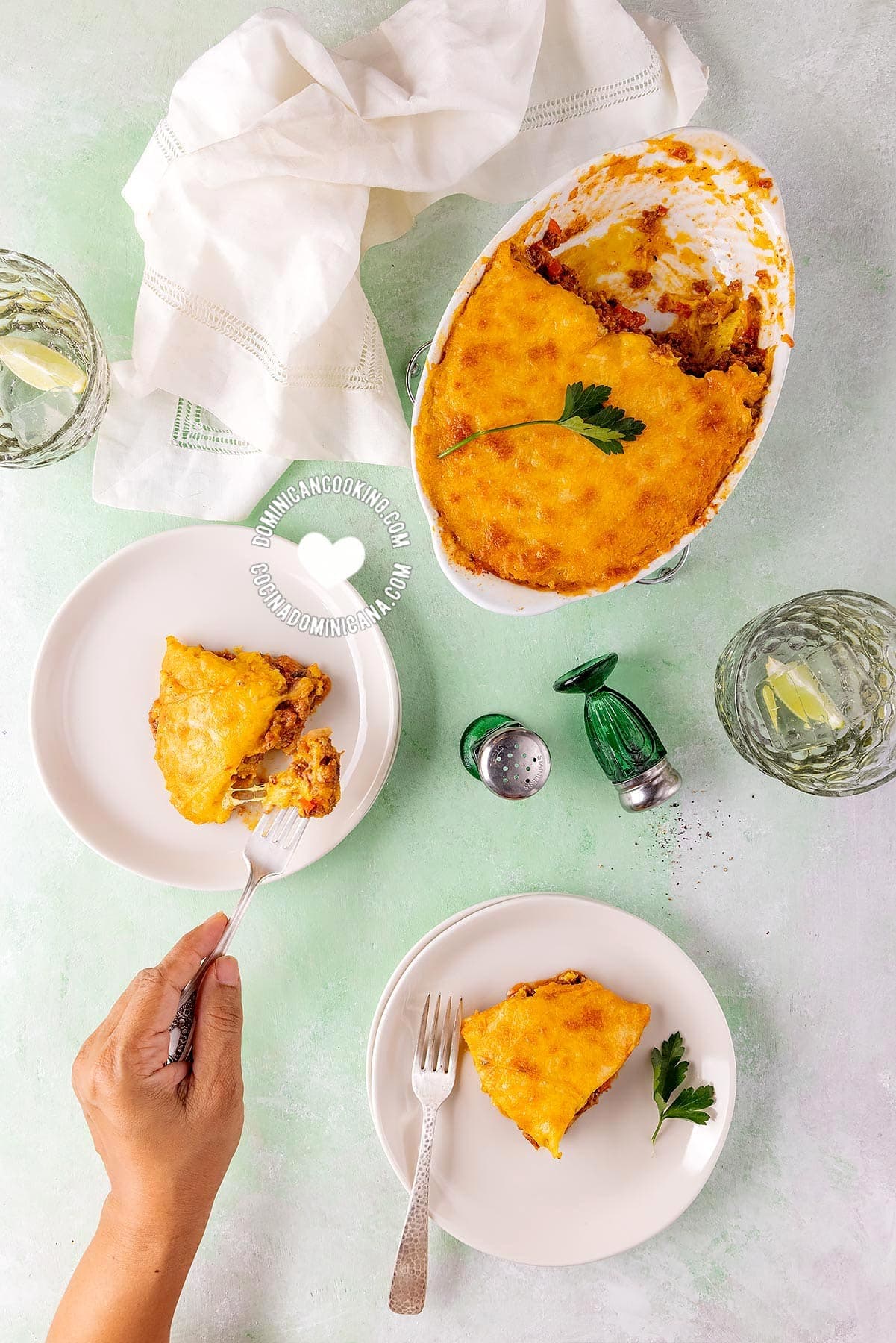
En Español Recipe ↆ
Pastelón de Plátano Maduro (Ripe Plantain Casserole) combines the delicate sweetness of ripe plantains, flavorful juicy beef filling, & melting cheese. Pure bliss.

Why we ❤️ it
Dominicans love their Pastelón de Plátano Maduro (Ripe Plantain Casserole), which is ironic, because apart from politicians, in this country there is nothing that is more maligned than the plantain.
Plantains are accused, no less, of being partly responsible for our island's rampant underdevelopment. It is said to block the brain and stop intelligence from flowing, according to some; while others say overindulgence leads to a dazed stupor. And there are even some who go as far as to say that if American children speak English from a young age, it's thanks to the "conflé" that they eat for breakfast, as opposed to mangú.
Myths, dear readers, pure myths. In this article, we demonstrate that there are vitamins and much more behind the peel and that despite all efforts to the contrary, we've got where we are today thanks to its nutritional benefits, taste, and versatility. Long live plátanos, and we'll go on buying them even if they are rabizas (undersized runts).
Origins
Plantains and bananas come from Asia. History tells us that when Alexander the Great arrived in India, he was surprised by their delicious taste and brought them to Greece. This was in around 327 BC. They spread further across the world thanks to Arab sailors who planted banana and plantain seeds along the east coast of Africa. Although Portuguese explorers introduced the crop to the new world in 1516, African slaves played a key role in making it a central feature of the continent's cuisine, mainly in the Caribbean, Central America, and the Pacific and Atlantic coastlines.
For better or for worse, bananas are one of the world's most popular fruits. Plantains and bananas only grow in temperate climates and it's estimated that 12 million tons are cultivated every year. 10 million tons come from Latin America.
Plantain vs banana
The banana (Musa cavendish y M. Sapientum) and the plantain (Musa paradisiaca) are two varieties of the same fruit, a long-leaved plant of the Musaceae family. Each region has its own varieties and peculiar names: In some countries such as Mexico, Central America, and Spain, "plátano" is the word used for both banana and plantain, and the plantain is distinguished by the name "plátano macho". In the Spanish-speaking Caribbean, we call the banana "guineo", while the Venezuelans call it "cambur". Dominicans call fried plantain slices "fritos" or "tostones".
The main difference between bananas and plantains is that the former has more sugar and less starch, while the latter has more starch than sugar and has to be cooked before eating. A plantain's taste depends on how ripe it is – the riper, the sweeter. Bananas are usually eaten raw, but can also be baked, fried or boiled in a variety of recipes. In India, for example, banana features in savory dishes.
Bananas are a good food for growing children: nutritious, an excellent source of energy, rich in vitamins A, C and K, glucids and potassium, as well as other minerals. Green plantains are a better source of energy than bananas (about 285 kcals per 100g) and are an ideal snack for athletes.
Storage
Most plantain and banana-lovers know that they should be stored at room temperature. To slow down the ripening process, wrap them in a newspaper and keep them in the fridge. It's also possible to peel and slice plantains for 'tostones' and store them in the freezer. Some even fry them once and store them to save time.
Whether fried, boiled, sliced or mashed into a Mangú (which a Dominican would never call 'purée'), mofongo or as a side dish to almost anything, Dominicans remain faithful to their plantains and seek them out and taste them everywhere they go.
As for those of you who still think that plantains make you stupid, this is for you: in India, when Alexander the Great arrived, bananas and plantains were known as "the fruit of the wise" because the Hindu Brahmins used to meditate under the shady leaves of banana or plantain trees. So there!
About this recipe
Aside from Mangú, Pastelón de Plátano Maduro (Ripe Plantain Casserole) is possibly the second most popular plantain recipe in the DR. A dish that nearly no Dominican will turn down.

Our Guest: Himilce A. Tejada is a Dominican food writer for the newspaper Diario Libre as well as other popular local Dominican publications.
As a follow-up to the subject raised by Aunt Ilana, Himilce also raises her hand in defense of the popular fruit.
Recipe
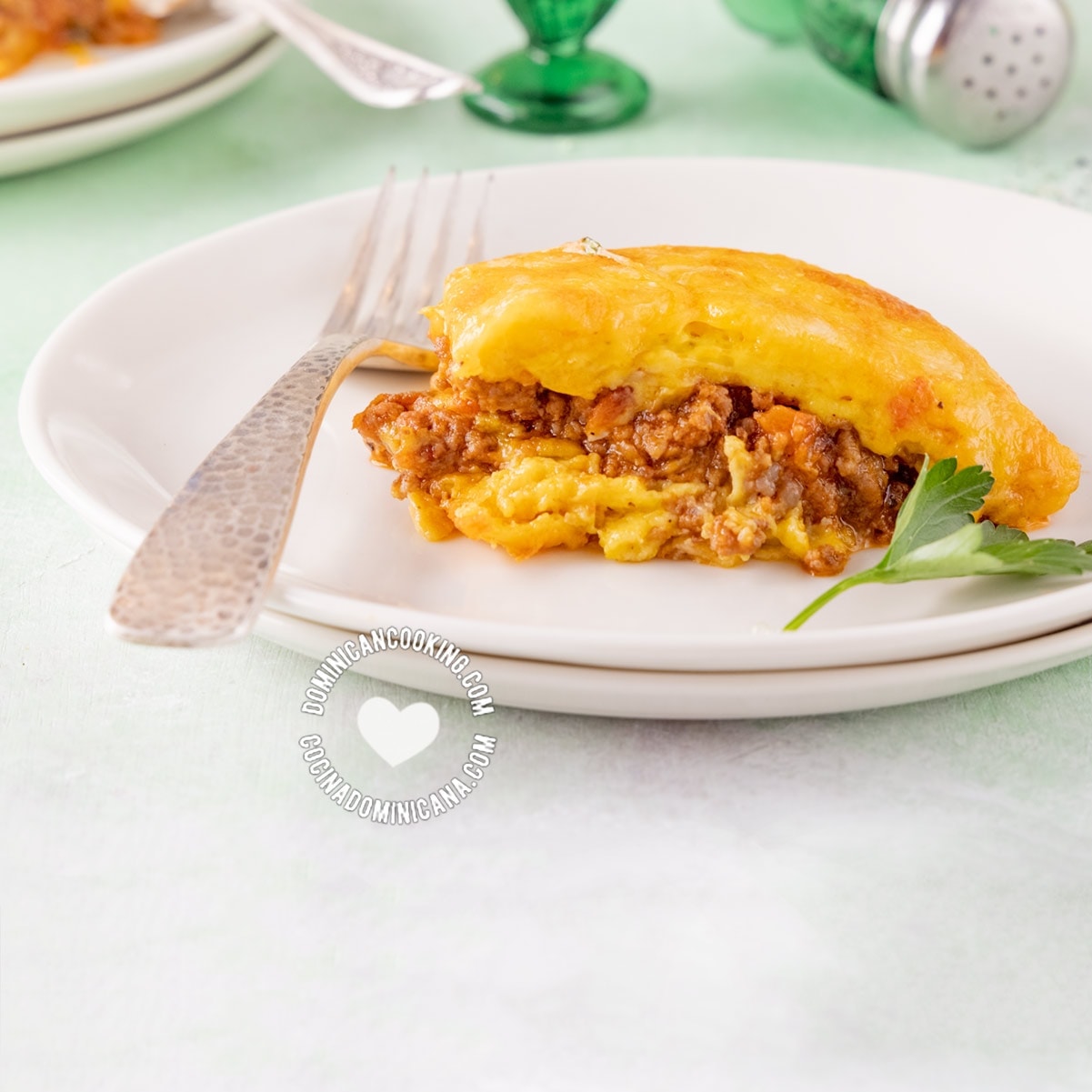
Keep screen on while cooking
[Recipe + Video] Pastelón de Plátano Maduro (Ripe Plantain Casserole)
Pastelón de Plátano Maduro Recipe (Ripe Plantain Casserole): The delicate sweetness of ripe plantains, flavorful beef filling, and melting cheese.Pure bliss.
For the filling
- 2 tablespoon olive oil
- 1 red onion, [65g], minced
- 1 tablespoon mashed garlic
- 1 pound minced beef, [454g]
- 1 cup tomato sauce, [115g]
- 1 bell pepper, seeded and minced
- 1½ teaspoons salt, (or more, to taste)
- ½ teaspoons pepper (freshly-cracked, or ground), (or more, to taste)
- 1 tablespoon chopped cilantro, (or parsley)
For the filling
-
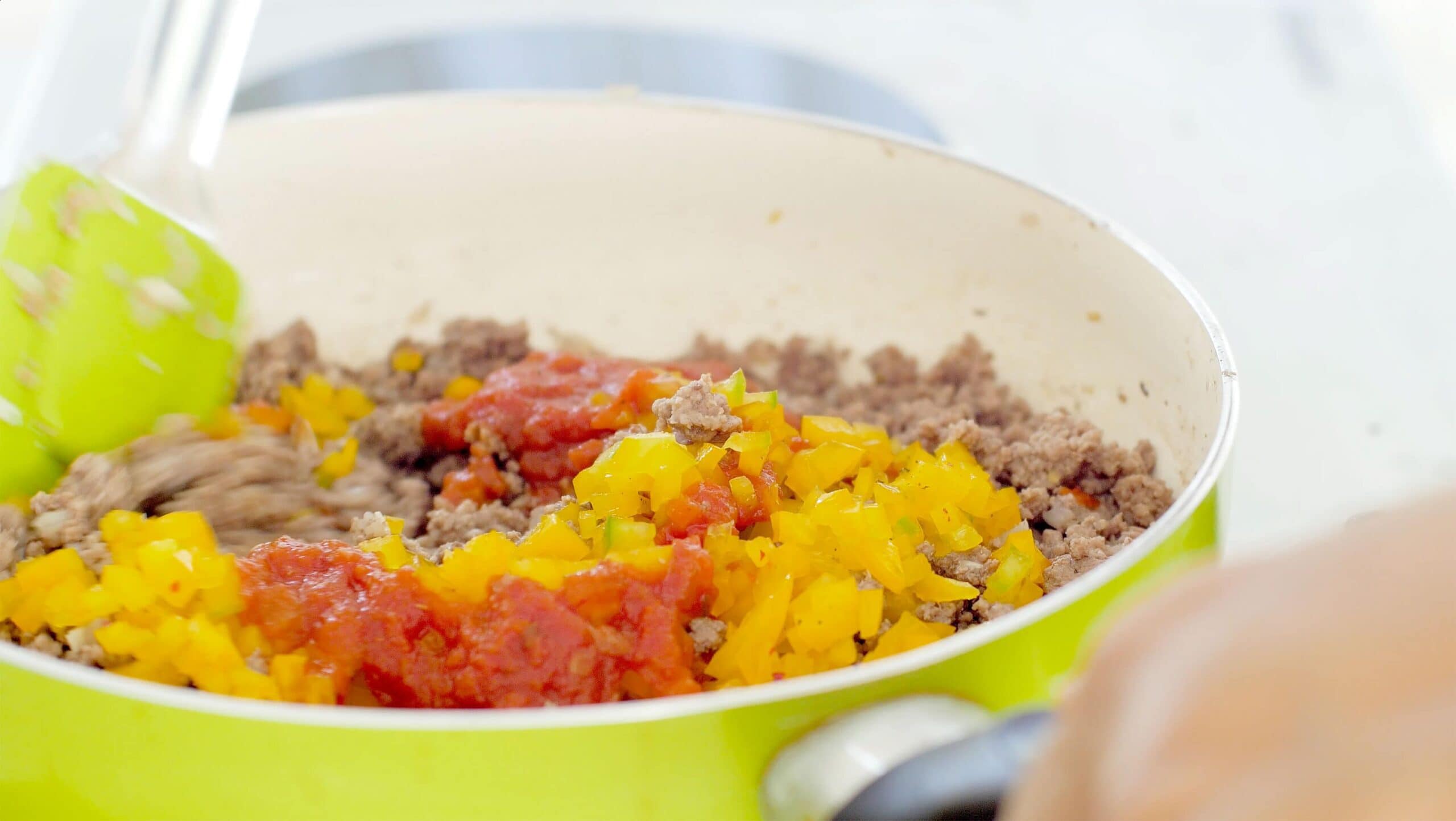
Make filling: Find recipe and instructions for filling here.
To assemble
-
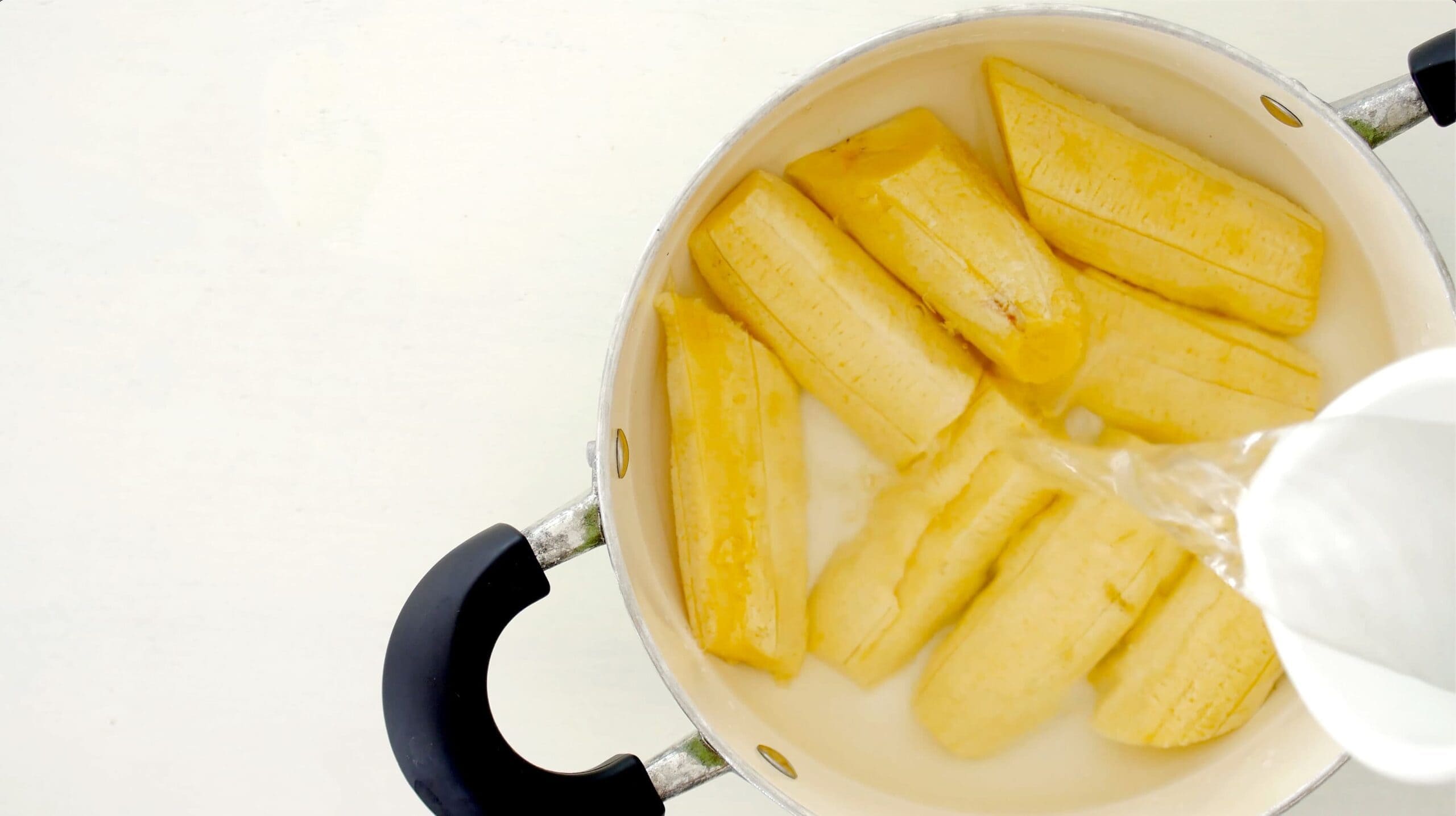
Boil plantains: Peel the plantains and boil adding 1 teaspoon of salt to the water. Once the plantains are fork tender (15 - 20 mins), remove from the heat.
-
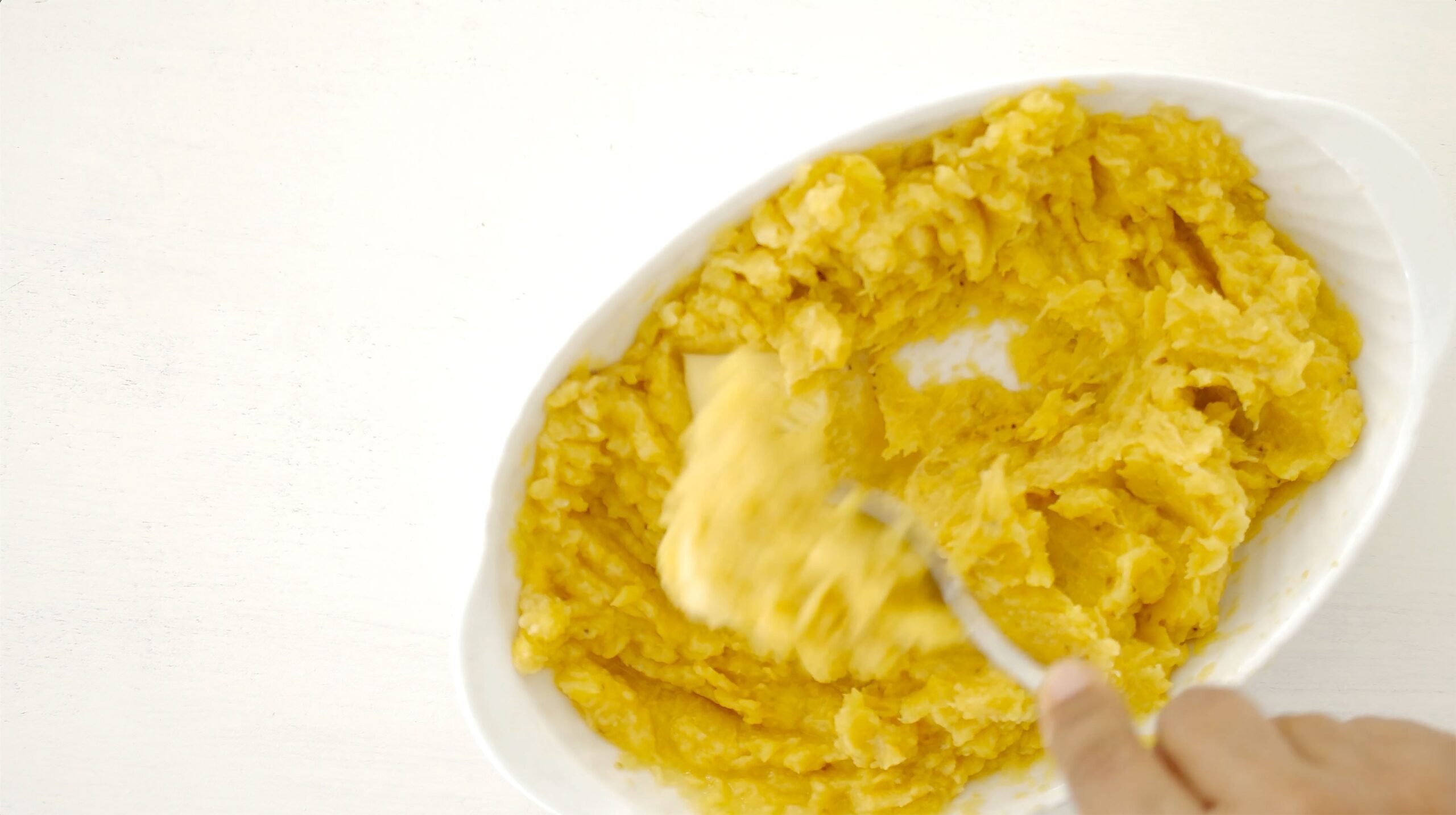
Mash: Take the plantains out of the water right away, and mash them with a fork.
Add the butter and keep mashing until it is very smooth with no lumps.
-
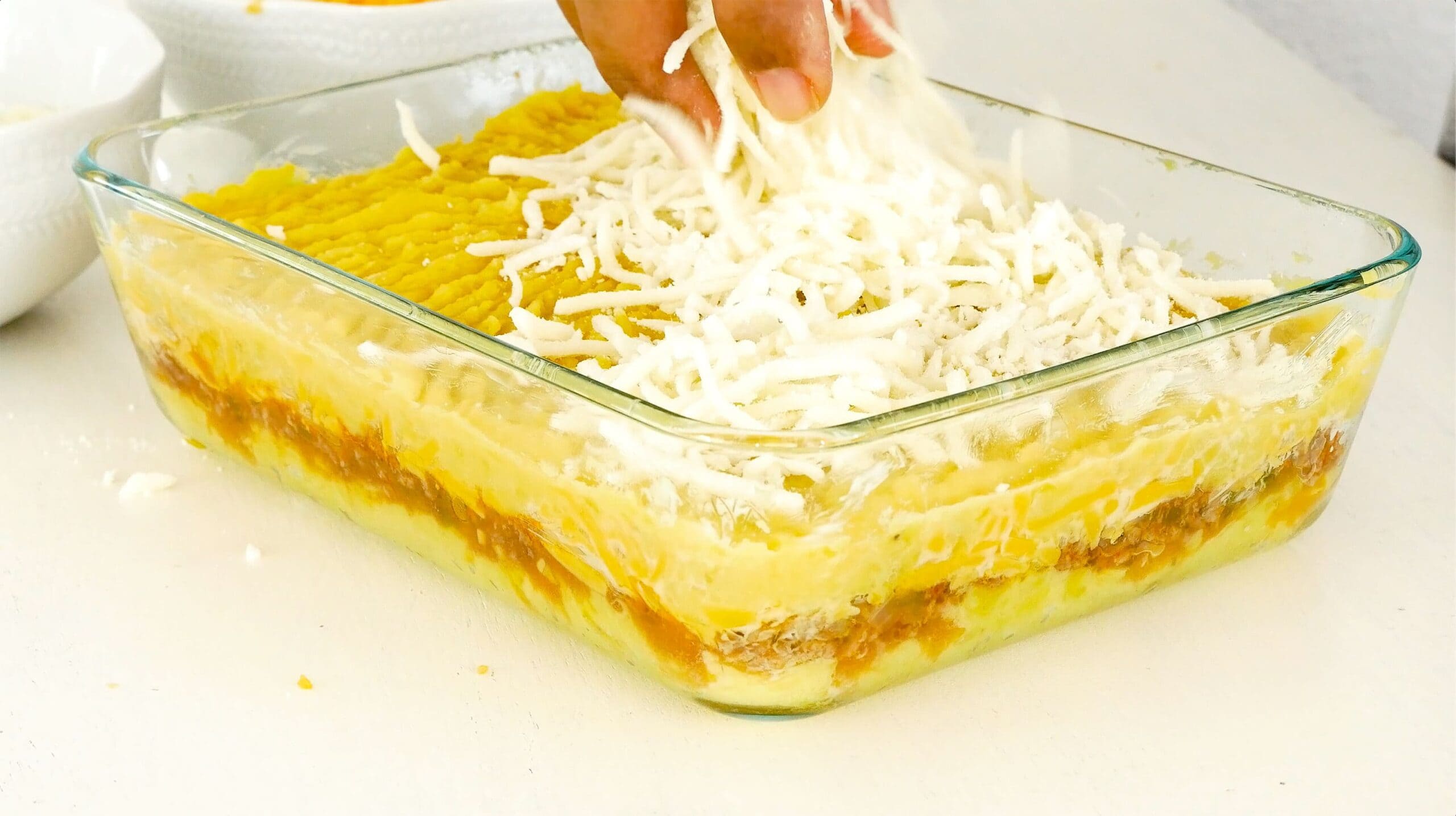
Layer: Grease a 1-inch tall baking pan. Put half of the plantains mixture in the baking pan. Cover with half of the cheese.
Cover the cheese with the meat. Cover with the remaining plantain mixture. Cover with the rest of the cheese.
-
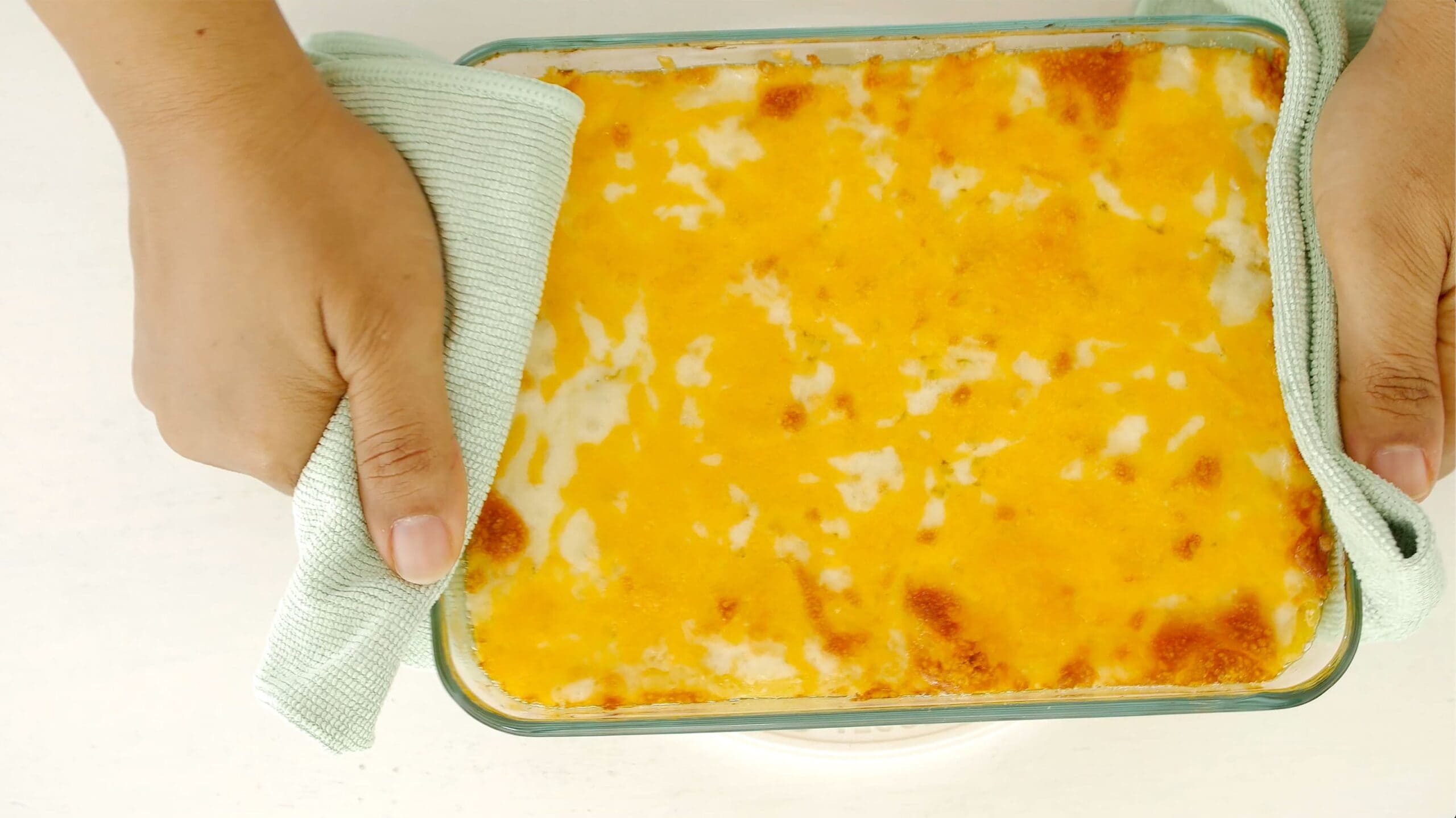
Bake: Cook in preheated oven to 350 °F [175 °C] until the top is golden brown.
-
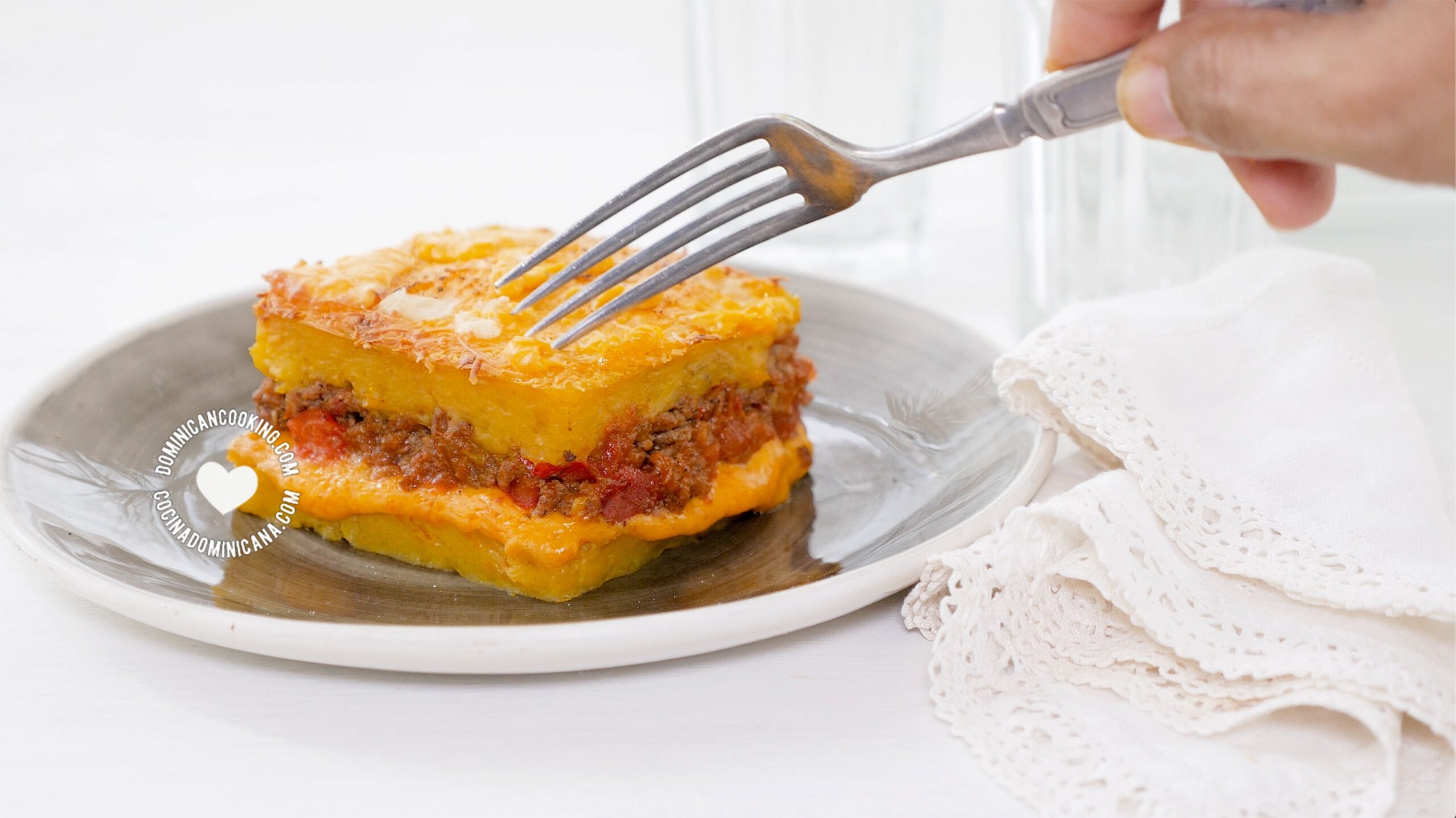
Serving: It will be easier to serve if you wait five minutes after removing from the oven.
Your choice of cheese and the order in which the layers are distributed is a matter of taste. Basically, any cheese that melts works, I like mixing cheddar and mozzarella, for example, while some people like placing the cheese right after the meat layer.
Go ahead, experiment!
Calories: 754 kcal Carbohydrates: 62 g Protein: 27 g Fat: 46 g Saturated Fat: 22 g Cholesterol: 120 mg Sodium: 1452 mg Potassium: 1421 mg Fiber: 5 g Sugar: 30 g Vitamin A: 3240 IU Vitamin C: 62.6 mg Calcium: 173 mg Iron: 3.9 mg
Nutritional information is calculated automatically based on ingredients listed. Please consult your doctor if you need precise nutritional information.
oliphantupoopturt1984.blogspot.com
Source: https://www.dominicancooking.com/250/pastelon-platano-maduro
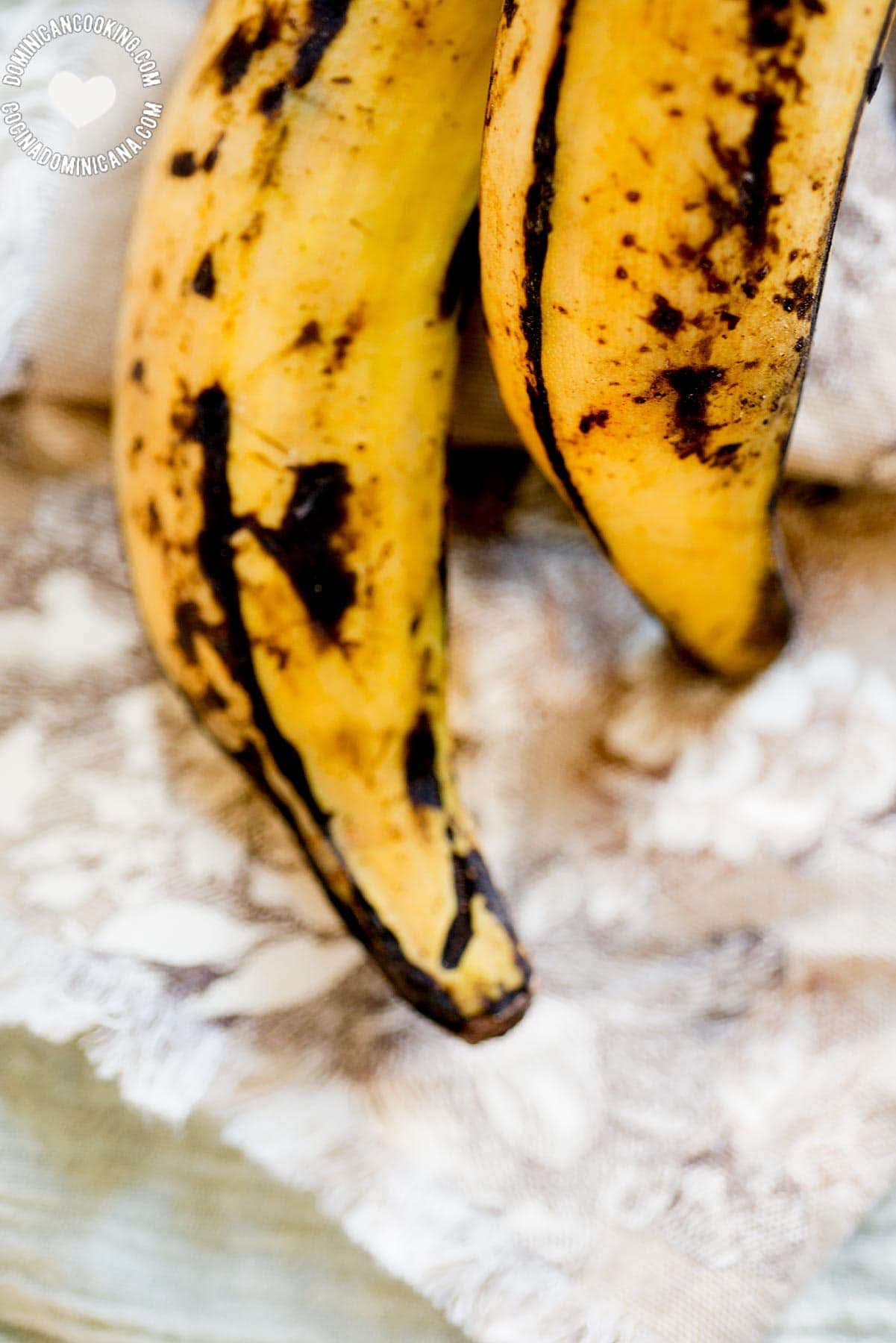
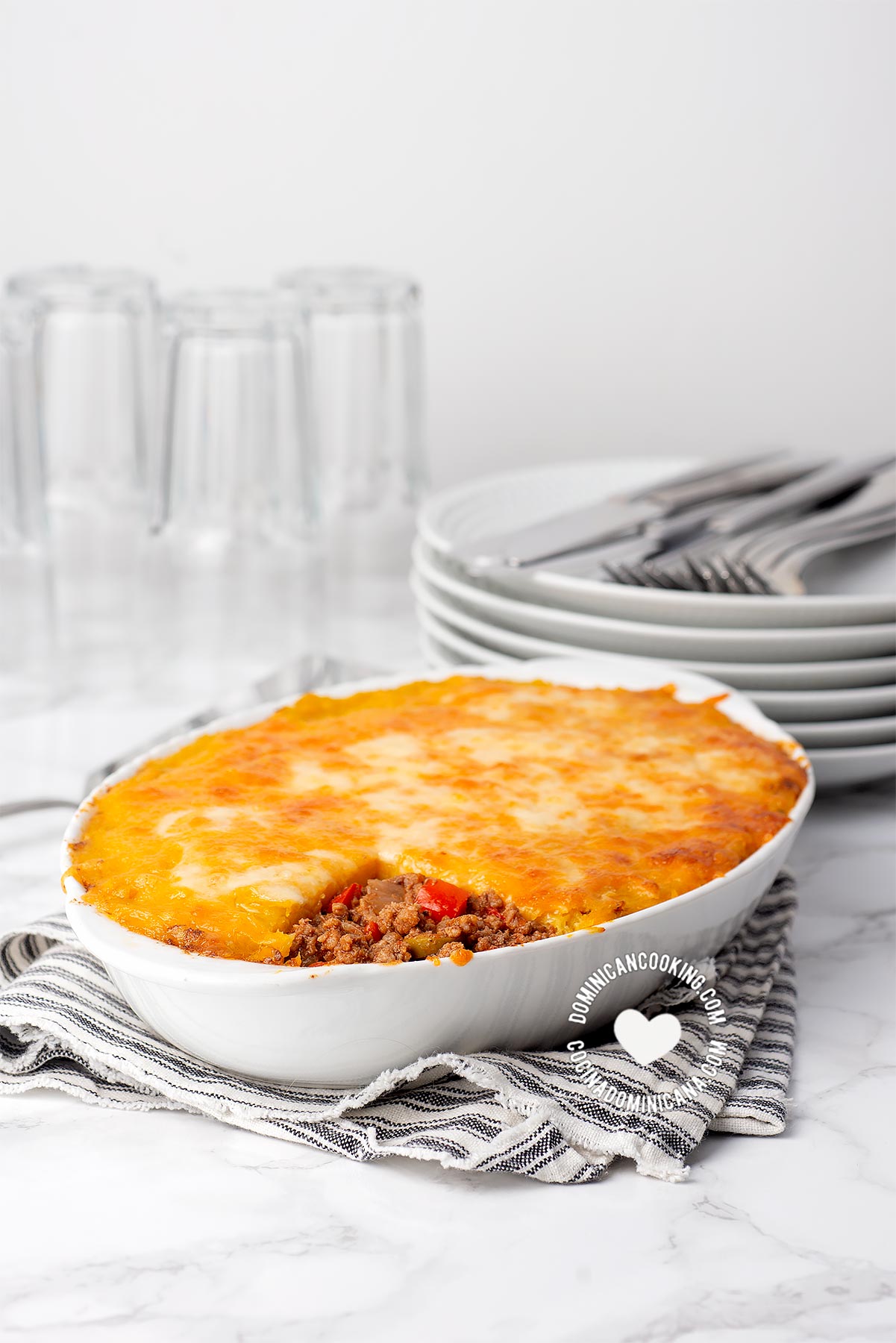
0 Response to "Plantain With Beef and Cheese Dominican"
Post a Comment